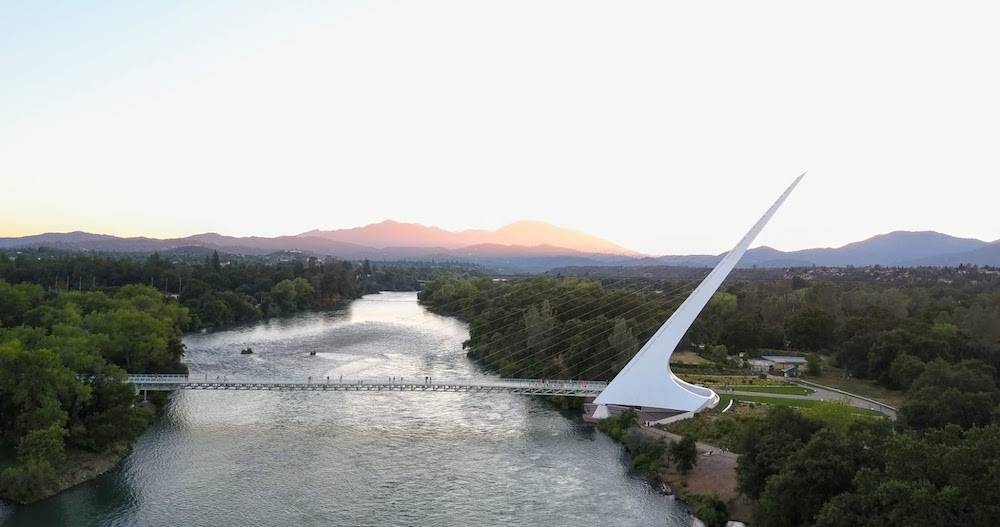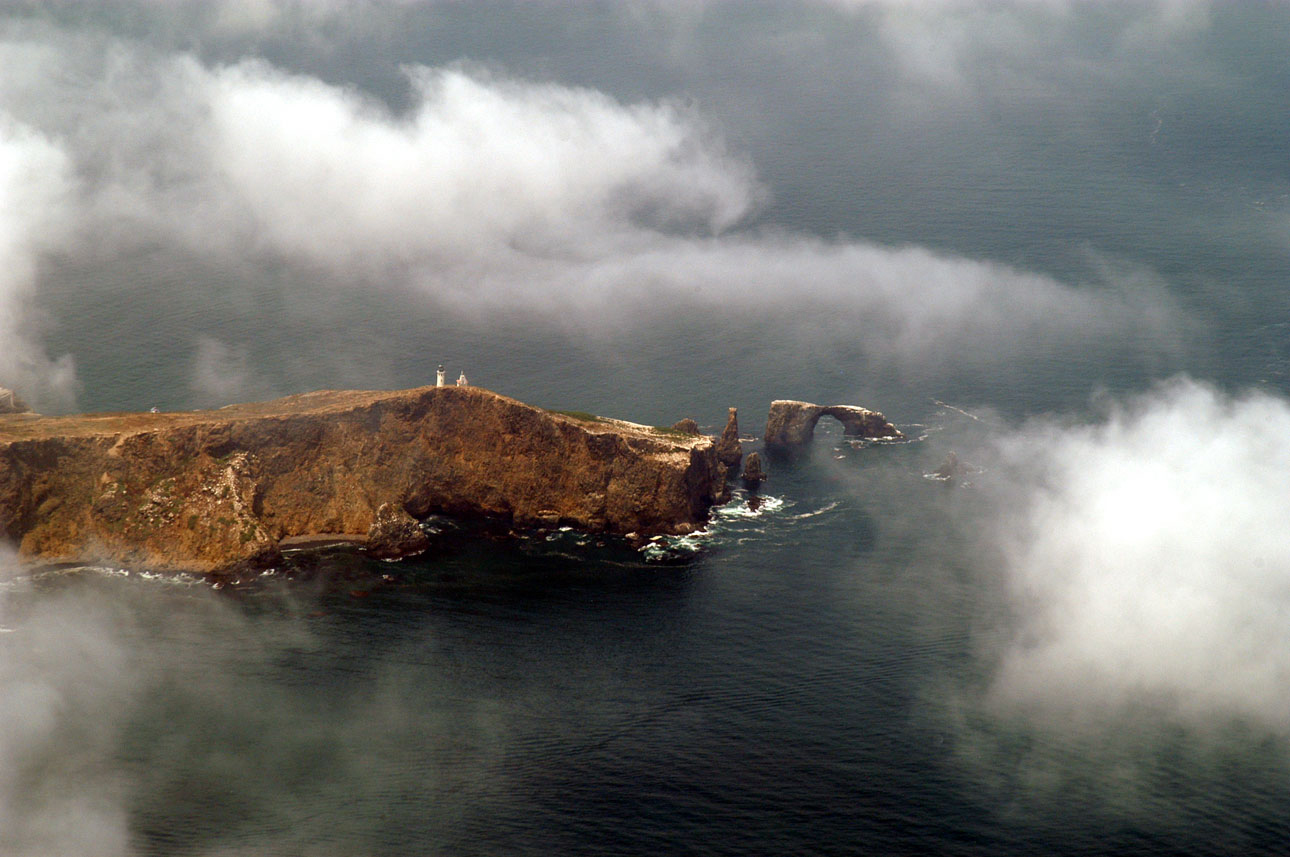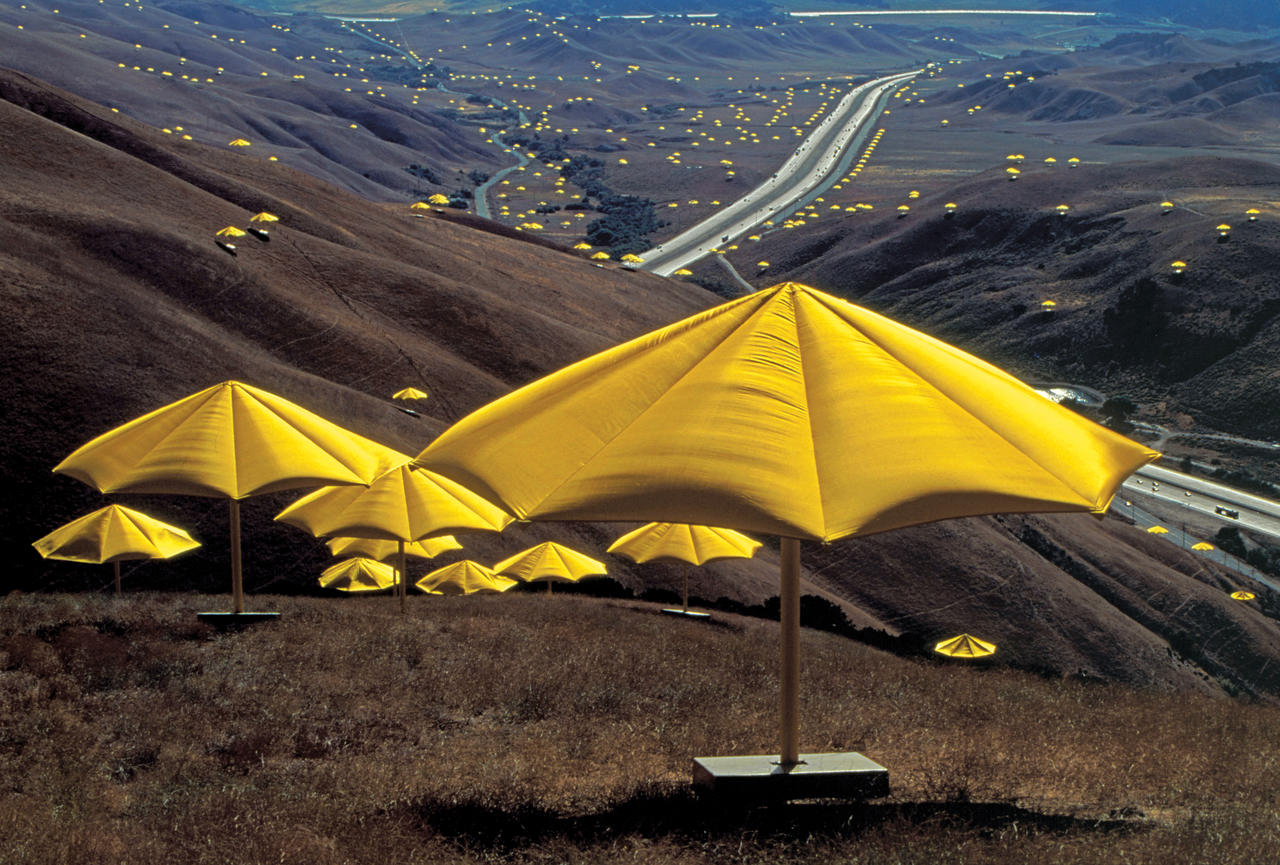Motorists took in the sights at Lion Country Safari in 1974. Orange County Public Library
6 fascinating facts about California: epic sundial and roaming lions edition
1In the 1970s and early ’80s, motorists drove among freely roaming lions in Irvine.
Lion Country Safari was the brainchild of a South African developer who aimed to simulate a wild animal safari for tourists in Orange County. Past a sign that read “No Trespassing. Violators Will Be Eaten,” visitors paid $3.25 to drive along a four-mile trail and get eyeball‐to‐eyeball — windows closed — with impalas, giraffes, antelopes, rhinos, and other animals.
Rangers armed with tranquilizer guns patrolled the grounds. But safety lapses ultimately hastened the park’s closure after 14 years. In 1982, a tiger mauled a toddler. The next year, an Asian elephant broke free and killed her trainer.
The former grounds of Lion Country Safari has now been devoured by suburban sprawl. Orange County’s largest apartment complex opened there five years ago, next to a Whole Foods and a street named Lion Country.

The Excite headquarters for sale in 2005. The company was once a dominant player among search engines.
Wikimedia Commons
2In 1999, Larry Page and Sergey Brin were prepared to sell Google to the search engine Excite for about $750,000. Excite declined.
Accounts vary, but George Bell, who was Excite’s C.E.O. at the time, has said that he balked at a demand from Page that Excite’s technology be ripped out and replaced by Google’s.
“We struggled with the decision,” he told CNBC in 2015. “I think the decision we made at the time, with what we knew, was a good decision. It’s laughable to say that now, I suppose.”
Today, Alphabet, the parent of Google, is said to be worth more than $800 billion. Excite largely faded into oblivion.
CNBC | Internet History Podcast

Sundial Bridge crosses the Sacramento River in the heart of Redding.
Turtle Bay
3Redding is home to one of the world’s largest working sundials.
Designed by the renowned Spanish architect Santiago Calatrava, the harp-like Sundial Bridge rises 217 feet and doubles as a glass-paneled foot and bicycle path across the Sacramento River. (Here are some great drone views).
A soaring white support tower for the bridge points due north at an angle and casts a shadow upon a large dial in a garden near the river’s edge. But because it’s not precisely aligned with Earth’s axis, it’s only really accurate for a few hours during the summer solstice.
Before the 2004 opening of the unconventional structure — said to resemble an egret in flight — naysayers wondered why a simple wooden bridge wouldn’t do. They largely fell silent as the sundial became something of a town square for Redding — a site for protests, festivals, and contemplation.
4In 1991, more than 1,700 giant yellow umbrellas were installed along the straw-colored slopes of Southern California.
The temporary art project along the Grapevine was the brainchild of the Bulgarian husband and wife artists Christo and Jeanne-Claude.
Skeptics grumbled at the proposal. But once in place, the whimsical display of 20-foot-tall nylon-and-aluminum umbrellas won many locals over.
A companion installation in Japan used blue umbrellas. Christo once called it “a symphony in two parts.” But it also turned out to be a tragedy in two acts. A fierce wind uprooted one of the 490-pound umbrellas, crushing a Camarillo woman to death against a boulder. Christo ordered the whole thing taken down. During the dismantling in Japan, a crane operator was fatally electrocuted by contact with a power line.
The artists were devastated. In an interview with the Bakersfield Californian a few years ago, Christo said, “It’s something that’s always with us, all our lives.”
Bakersfield Californian | Christo and Jeanne-Claude

“Up” is about loss, regret, and adventure.
Pixar
5In 2009, a 10-year-old girl who was stricken by cancer and deteriorating rapidly had a dying wish: She really wanted to see “Up.”
The Pixar movie was only in theaters, but Colby Curtin was too ill to leave her Huntington Beach family’s house. After some frantic calls, a Pixar employee was dispatched by plane with a DVD in hand.
“Do you think you can hang on?” Colby’s mother said to her, the O.C. Register reported. “I’m ready (to die),” the girl said, “but I’m going to wait for the movie.”
The employee arrived with the DVD and a bag of stuffed animals. Colby was unable to open her eyes, so her mother whispered the scenes to her. She died later that night.

An aerial view of Anacapa Island. It was once part of a single large island.
NOAA
6There’s a “super island” lurking beneath the ocean’s surface off Southern California.
Santarosae Island was mostly submerged by rising seas during the waning of the last ice age. The northern Channel Islands — San Miguel, Santa Rosa, Santa Cruz, and Anacapa — are remnants of what was a single ancient landmass that stretched nearly 80 miles from east to west.
One of the oldest known human skeletons in North America — the 13,000-year-old Arlington Springs Man — was found there. Indigenous people lived among pygmy mammoths and thrived on a bounty of acorns, seaweed, fish, seals, and waterfowl.
They were possible ancestors of the Island Chumash tribe, whose numbers were decimated in encounters with Europeans. The last of the native population was removed to the Spanish Missions by the 1820s, leaving Santarosae and its remnants uninhabited by humans for the first time in more than 12,000 years.
KCET | Museum of Natural and Cultural History
This article is from the California Sun, a newsletter that delivers must-read stories to your inbox each morning — for free. Sign up here.
Get your daily dose of the Golden State.
